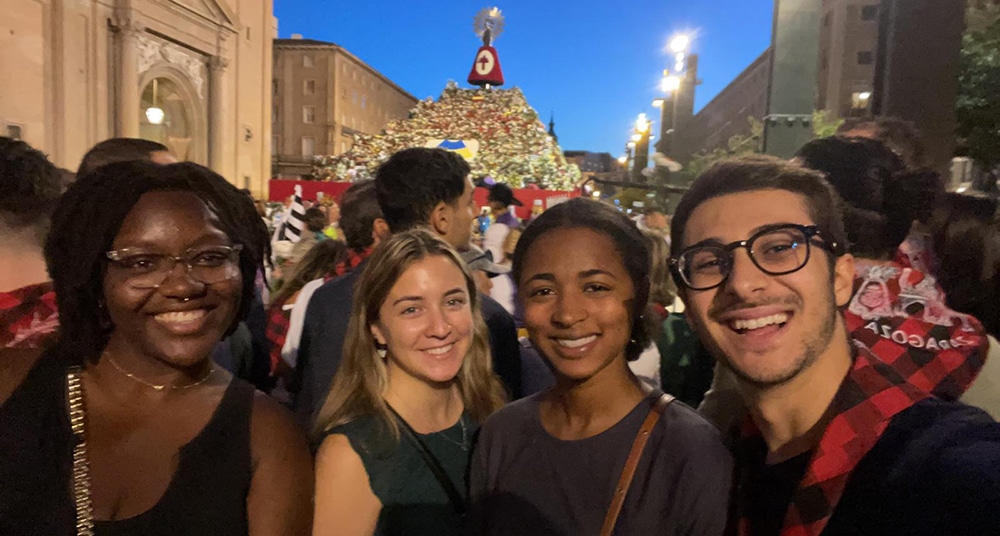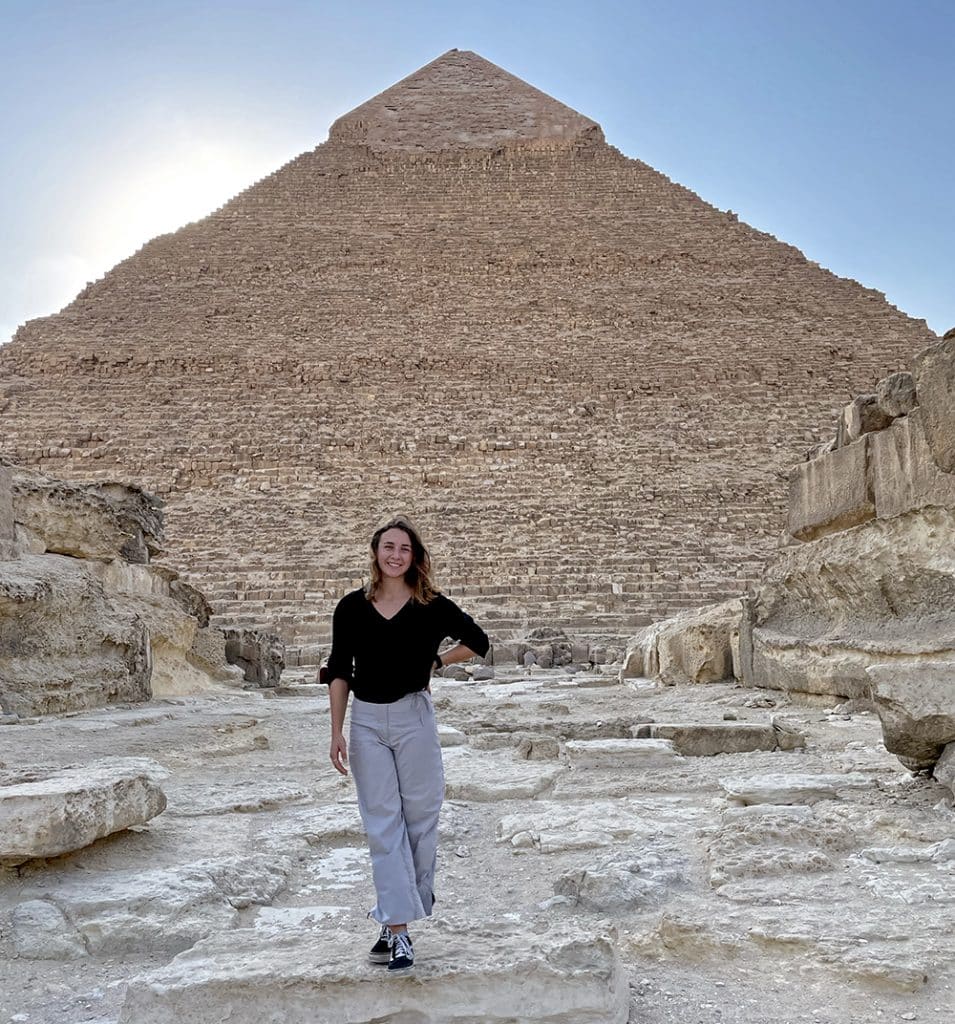Originally from Phoenix, Jaiden Gatson is a fifth-year IGP student at NAU with majors in biomedical science and Spanish and minors in chemistry and Arabic and Asian studies. The Interdisciplinary Global Program is a five-year program at NAU in which students double-major in a language and either STEM, business or hospitality, then complete a year abroad that includes classes and a relevant internship, giving students an immersive, hands-on international experience.
Where did you study and why did you choose this particular country for your study abroad program?
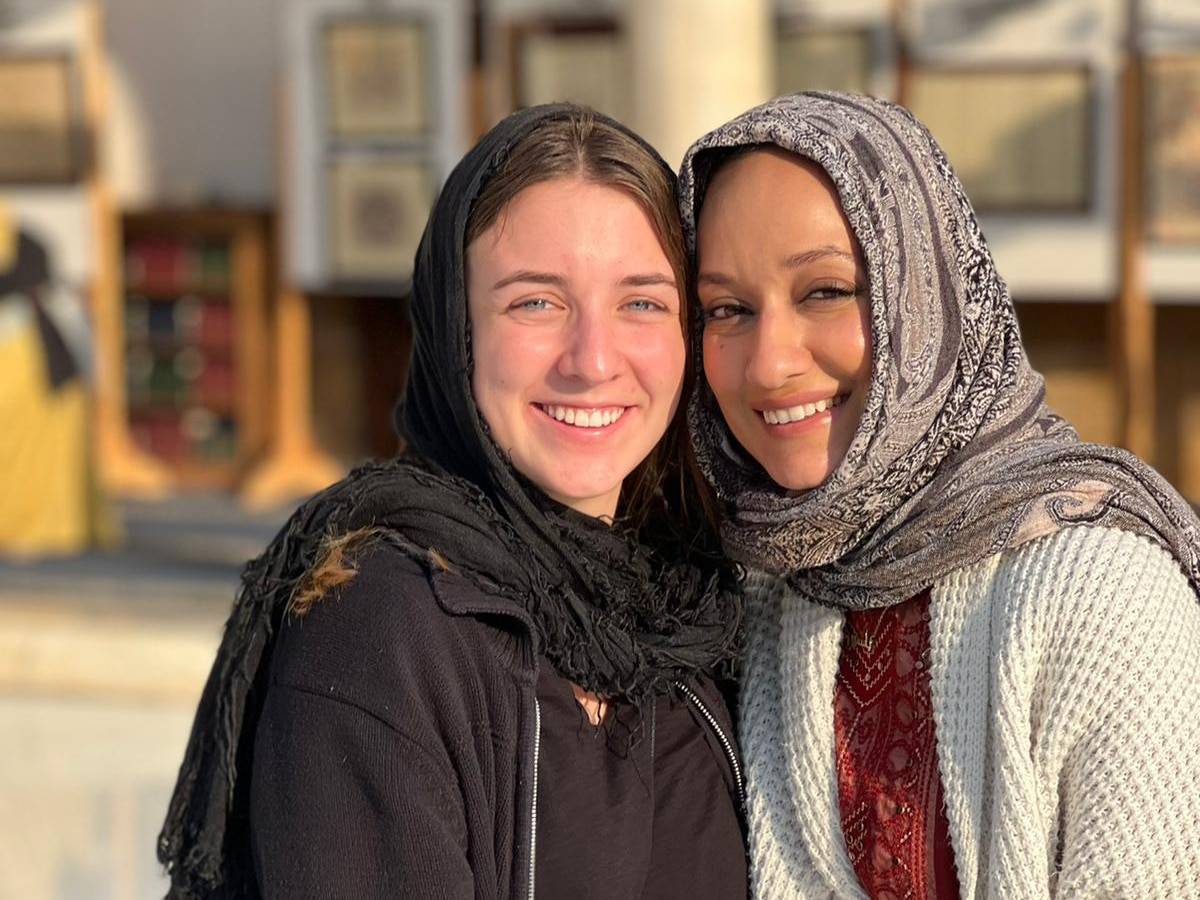
I had a unique study abroad journey in that I studied abroad for two years. Through IGP, I was able to spend one year at the American University in Cairo (AUC) in Cairo, Egypt, and one year at the University of Zaragoza (UniZar) in Zaragoza, Spain.
I chose Egypt because I knew they had a biology program, and I thought it would be a super unique and fun place to live and study. Once I got there, I decided to take classes about Arab and Egyptian culture instead of science classes. It worked out because all of the classes I took during my year in Egypt counted toward my liberal studies courses that we are all required to take as students at NAU. Also, I was able to double-dip and add on Arabic and Asian studies minors!
When I was choosing a Spanish-speaking country through IGP, I decided to travel to Spain because I knew that previous IGP students had completed medical internships in Zaragoza. I also thought living in Spain would allow me to cheaply travel around Europe, which it did!
What class(es) or research did you complete while abroad and for how long?
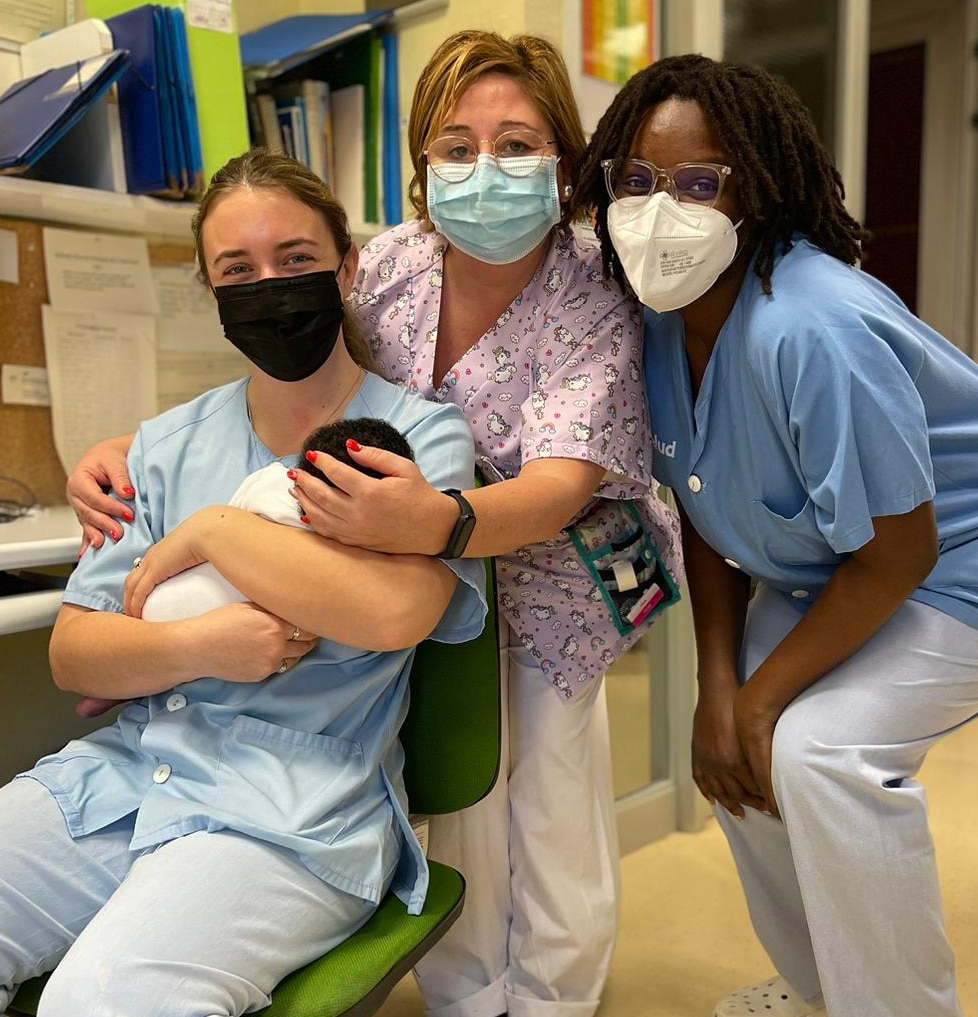
The first semester at AUC I took the following classes:
- Intro to Colloquial Egyptian Arabic
- Arab Society
- Introduction to Painting
- A Critical Introduction to the Middle East
- Religion and Politics in Islam
The second semester at AUC, I was admitted into the Arabic Language Intensive Program, and I took the following classes:
- Elementary Colloquial Egyptian Arabic
- Elementary Modern Standard Arabic 1 & 2
- Elementary Printed Media
The first semester at UniZar, I took the following classes (in Spanish):
- Human Biochemistry
- Preventive Medicine and Public Health
- General Linguistics
- Syntax of Spanish
The second semester at UniZar. I completed the following internships (in Spanish):
- 200 hours at the Hospital Clinico Universitario Lozano Blesa with Dr. Gerardo Rodriguez in neonatology and pediatrics
- 340 hours at the Hospital Clinico Universitario Lozano Blesa with Dr. Daniel Oros Lopez in obstetrics and gynecology and in the research lab
How did you fund your study abroad experience?
Obviously, the cost of living depends on where you study abroad, but in my case, I found that the cost of living abroad was cheaper for me than living in Flagstaff. I also received scholarships like the Lumberjack and ASNAU Go scholarships, which helped. During the summer, I also worked full-time for the City of Phoenix Aquatics and was able to use that money to help fund the traveling and cost of day-to-day living.
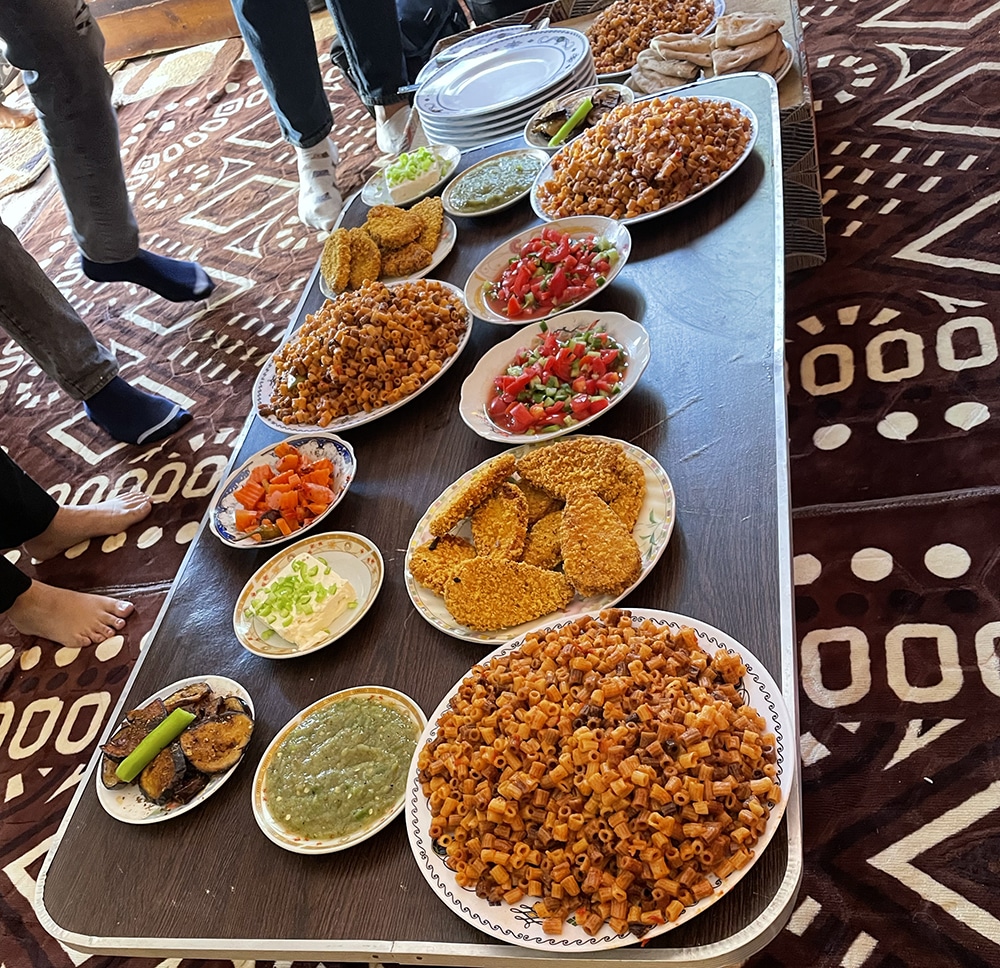
Tell us about your favorite—and/or least favorite—dish abroad.
In Egypt my favorite dishes were كشرى (koshary) and ملوخية (molokhia). Koshary is a dish made up of rice, lentils, pasta, chickpeas, crispy onions and a spicy garlic tomato sauce. Molokhia is a soup-like dish made from the leaves of Corchorus olitorius eaten with bread or over rice and sometimes meat (usually chicken).
I wasn’t a big fan of Spanish food, but I really liked the sangria, especially if it was made with Moscato. Sangria is an alcoholic drink that is made with wine and fruits, but other things can be added to it like orange juice and brandy.
Being away from home can be challenging. How have you dealt with homesickness and maintained connections with loved ones?
I think that homesickness is inevitable, but there are definitely things that I learned that helped me when I was feeling homesick. Before I left for my study abroad trips, I made sure my close family and friends had a way to contact me either via WhatsApp or another social media. I would schedule a time to Facetime, text or just send videos back and forth when the time difference made it too difficult to call. I also tried to find things that kept me busy like working out, going out to eat, signing up for activities, reading and painting. I definitely recommend looking into clubs or organizations on your campus that are for international students. I made most of my friends and got to do a lot of cool activities and excursions through these groups!
What’s been your biggest culture shock moment?
In Egypt, one of the biggest culture shocks was the energy that Cairo had. It is literally a city that never sleeps. You could go out at any time of the day or night and see so many people and cars out and about honking their horns, laughing, praying, eating and more. The people were so friendly and welcoming and I felt so safe there.
In Spain, one of the biggest culture shocks was how their concept of time differs from the U.S. What I mean by that is in general, they are much more relaxed and flexible with time. For example, in Spain, they have a daily ‘siesta’ or nap where most shops close and people go home from work to eat, nap and spend time with their loved ones. It was hard to get used to this at first, but I soon adapted and even enjoyed this tradition as the year went on.
What local traditions or customs have you experienced?
While in Egypt, I was able to experience the Islamic holy month of Ramadan, which is a time of prayer, fasting, reflection and community. During Ramadan, people are invited to participate in a fast in which they don’t eat or drink anything including water while the sun is up. So every morning before the sun rises, prayer is called out and everyone wakes up to eat صحور (suhoor), and every night after the sun sets there are big dinners and people hand out food on the street or have tables with meals for anyone to join freely called افطار (iftar). It was a really beautiful time and I was able to experience the generosity, warmth and love of the people in Egypt even more during this month.
In Spain, there are a lot of traditions and holidays, usually rooted in Catholicism, but each city and region has its own unique festival. In Zaragoza, we had a weeklong festival called Fiestas de Pilar which celebrates Mary, the mother of Jesus. We had a week off school and there were huge parades and parties all over the city. On the main day of the festival, there is a huge parade that walks all through the city towards the Basilica de Nuestra Señora del Pilar. There is music, incense and dancing, and the people in the parade are dressed in traditional clothing and bring flowers to the basilica and form a big pyramid of flowers with a statue of the Virgin Mary at the top. (See below photo.) It was a very unique and fun time.
